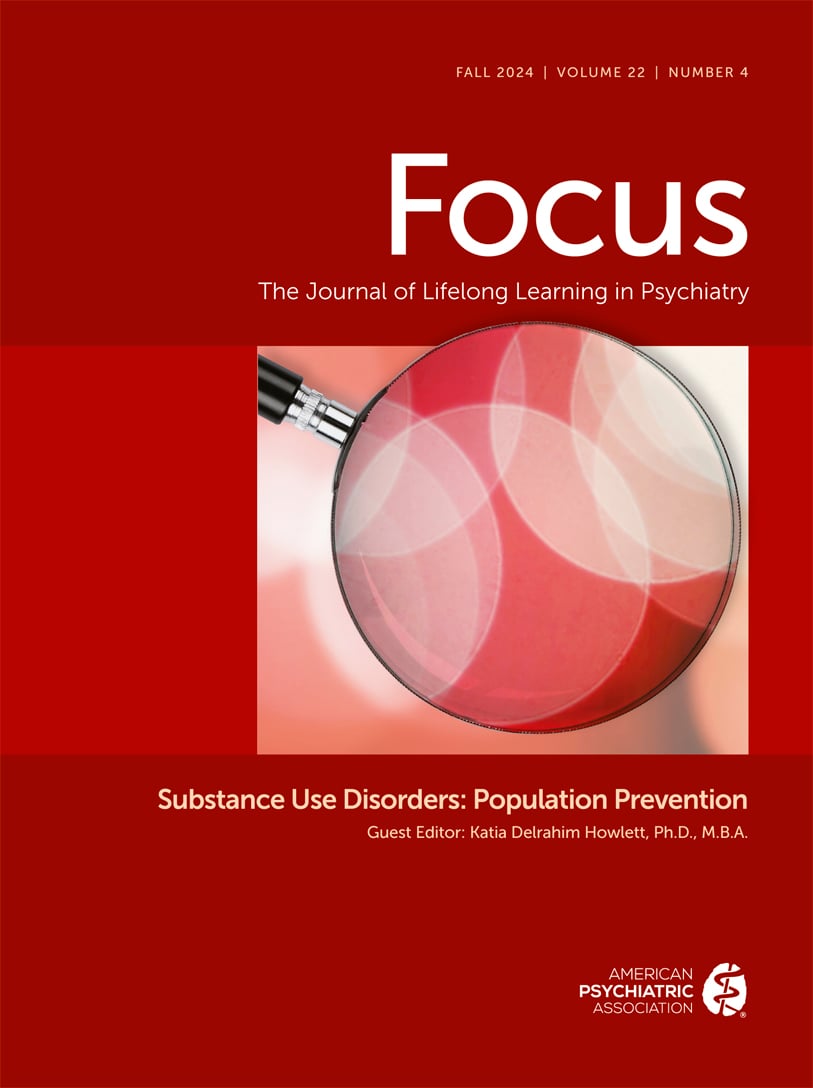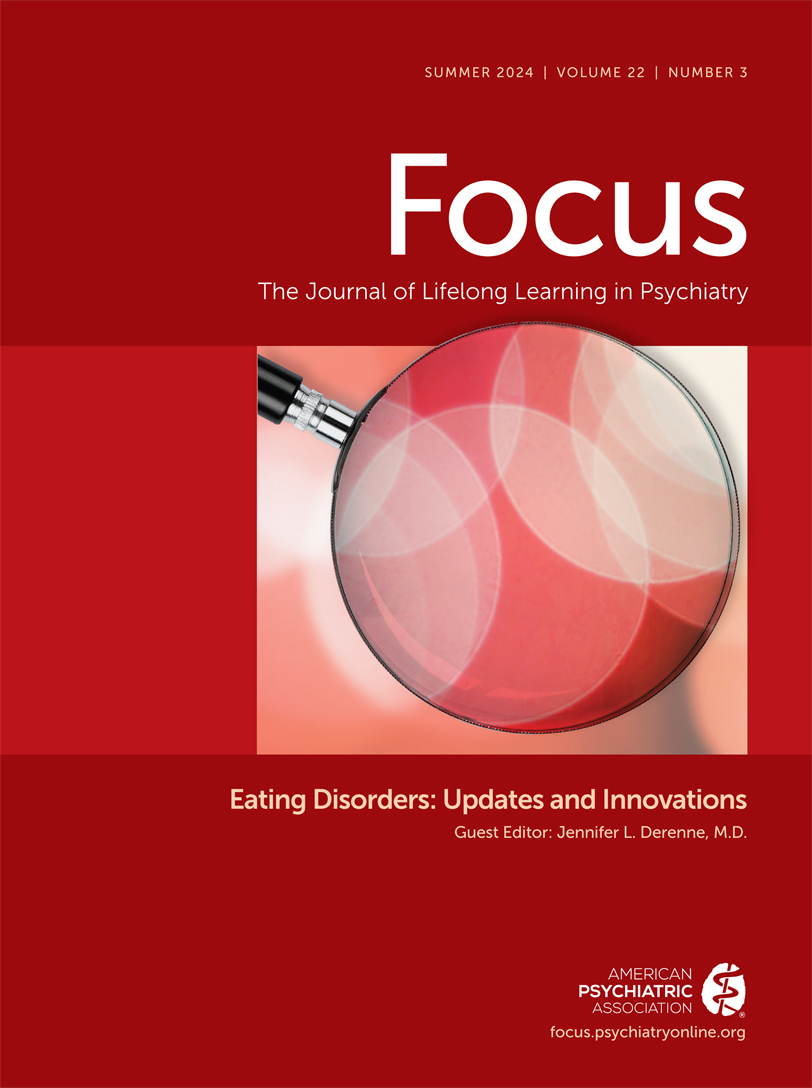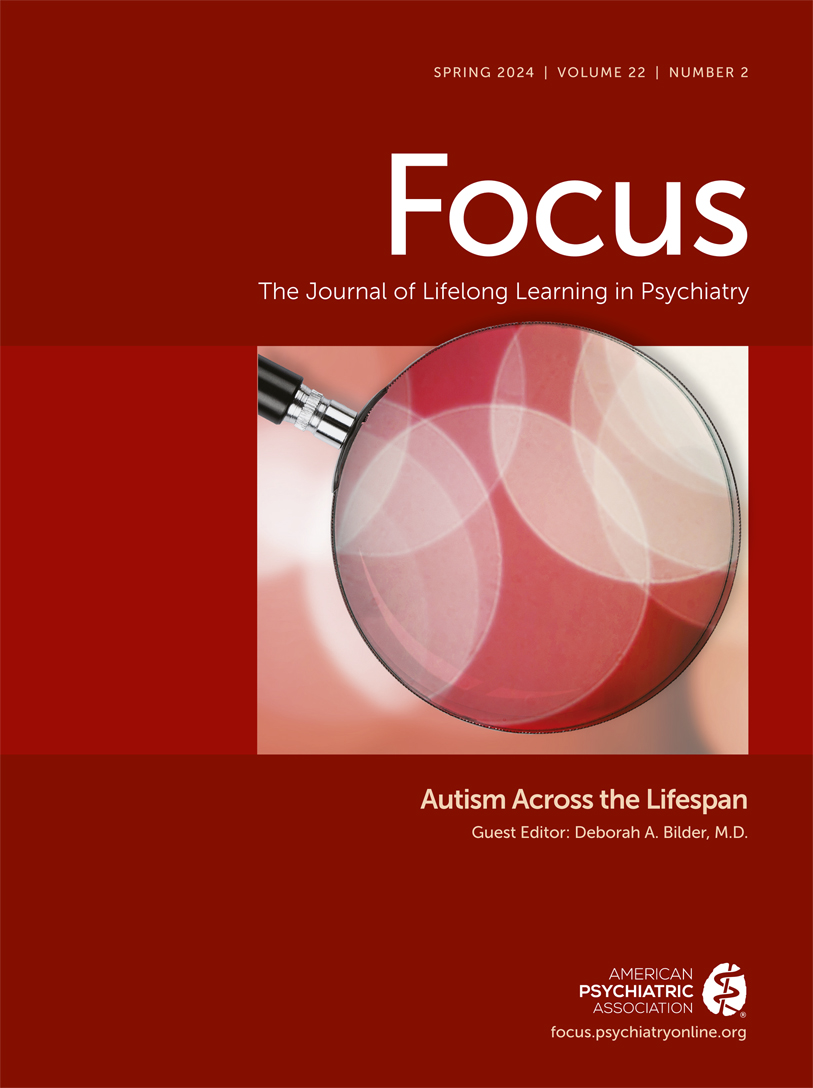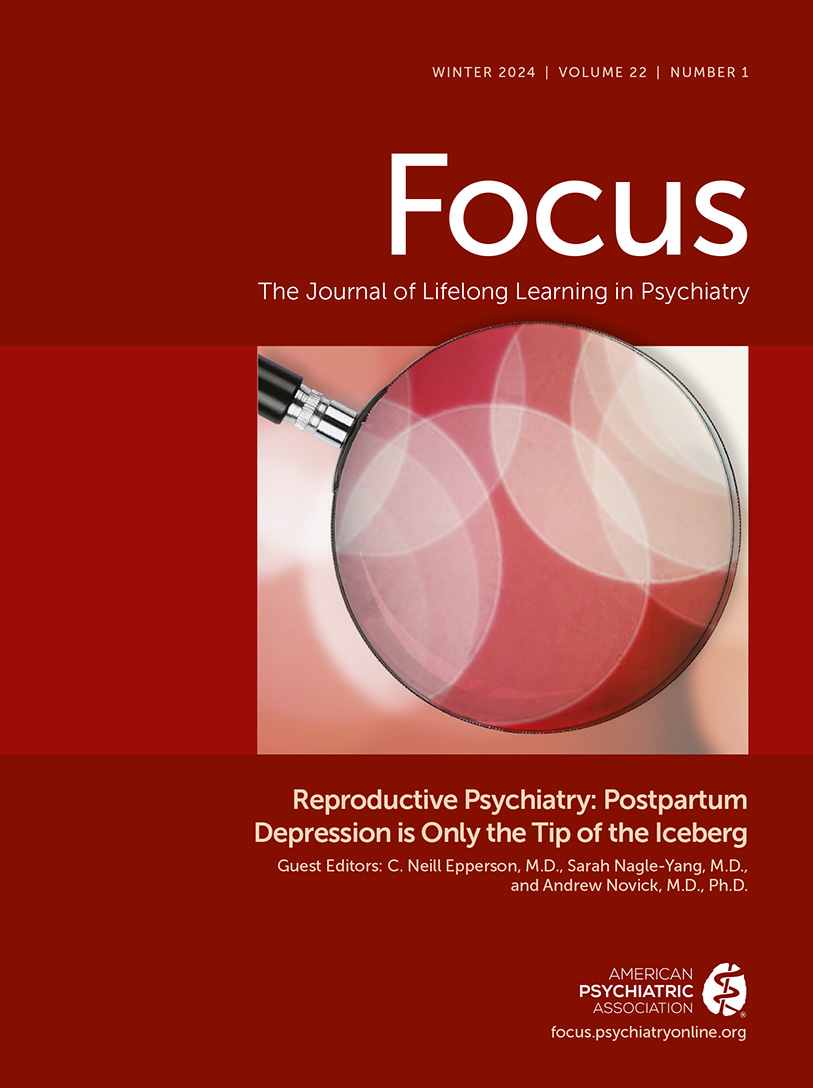Focus
- Volume 2
- Number 3
- July 2004
EDITORIAL
CLINICAL SYNTHESIS
Publication date: 01 July 2004
Pages333–342Anxiety disorders are highly prevalent, disabling conditions. The diagnoses of anxiety disorders are continually undergoing revision. In clinical treatment and research, both dimensional and structural diagnoses can be used, depending on the situation. ...
https://doi.org/10.1176/foc.2.3.333REVIEW
Publication date: 01 July 2004
Pages360–365This patient management exercise is designed to test your comprehension of material presented in this issue of Focus as well as your ability to evaluate, diagnose, and manage clinical problems. Answer the questions below, to the best of your ability, on ...
https://doi.org/10.1176/foc.2.3.360INFLUENTIAL PUBLICATION
Publication date: 01 July 2004
Pages368–391Objective: Most research on the effects of severe psychological stress has focused on stress-related psychopathology. Here, the author develops psychobiological models of resilience to extreme stress. Method: An integrative model of resilience and ...
https://doi.org/10.1176/foc.2.3.368Publication date: 01 July 2004
Pages392–401After providing background information on the definition and nature of generalized anxiety disorder, this article describes cognitive-behavioral therapy (CBT) methods that have been empirically supported in the treatment of this disorder. Subsequent to ...
https://doi.org/10.1176/foc.2.3.392Publication date: 01 July 2004
Pages402–409A major focus in the field of anxiety in the past decade, and an area of intense ongoing interest, is the delineation of the basic neurocircuitry underlying normal and pathologic anxiety. Preclinical work defining the basic neurocircuitry responsible for ...
https://doi.org/10.1176/foc.2.3.402Publication date: 01 July 2004
Pages410–415Recently the National Institutes of Health has been emphasizing research that takes findings generated by clinical research and translates them into treatments for patients who are seen in day-to-day nonresearch settings. This translational process ...
https://doi.org/10.1176/foc.2.3.410Publication date: 01 July 2004
Pages416–425In both clinical and epidemiological samples, major depression (MD) and generalised anxiety disorder (GAD) display substantial comorbidity. In a prior analysis of lifetime MD and GAD in female twins, the same genetic factors were shown to influence the ...
https://doi.org/10.1176/foc.2.3.416Publication date: 01 July 2004
Pages426–439Objective: In a 1989 article, the authors provided a hypothesis for the neuroanatomical basis of panic disorder that attempted to explain why both medication and cognitive behavioral psychotherapy are effective treatments. Here they revise that hypothesis ...
https://doi.org/10.1176/foc.2.3.426Publication date: 01 July 2004
Pages440–453Objective: In this critical review the authors evaluate the literature regarding the relationship between lifelong DSM-III-R anxiety disorders and alcohol dependence. Many alcohol-dependent individuals demonstrate severe anxiety symptoms in the context of ...
https://doi.org/10.1176/foc.2.3.440Publication date: 01 July 2004
Pages454–461Objective: Obsessive-compulsive disorder is a chronic and often disabling disorder that affects 2 to 3 percent of the U.S. population. Optimal treatment involves a combination of pharmacologic and cognitive-behavioral therapies. Advances in ...
https://doi.org/10.1176/foc.2.3.454Publication date: 01 July 2004
Pages462–474The goal of the study was to provide a quantitative analysis of the relative efficacy of all five currently available serotonin reuptake inhibitors (SRIs) and behavior therapy [exposure and response prevention (ERP)] for obsessive compulsive disorder. The ...
https://doi.org/10.1176/foc.2.3.462Publication date: 01 July 2004
Pages496–506Objective: The purpose of this study was to describe the clinical characteristics of a novel group of patients with obsessive-compulsive disorder (OCD) and tic disorders, designated as pediatric autoimmune neuropsychiatric disorders associated with ...
https://doi.org/10.1176/foc.2.3.496Past Issues
View Issues Archive
Vol. 22 | No. 4

Vol. 22 | No. 3

Vol. 22 | No. 2
